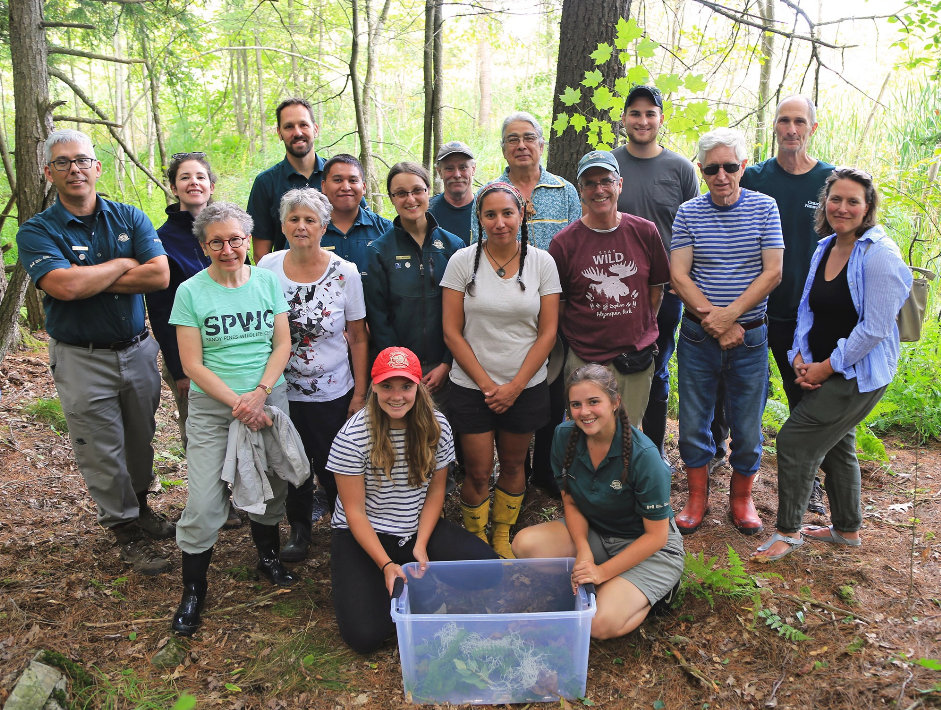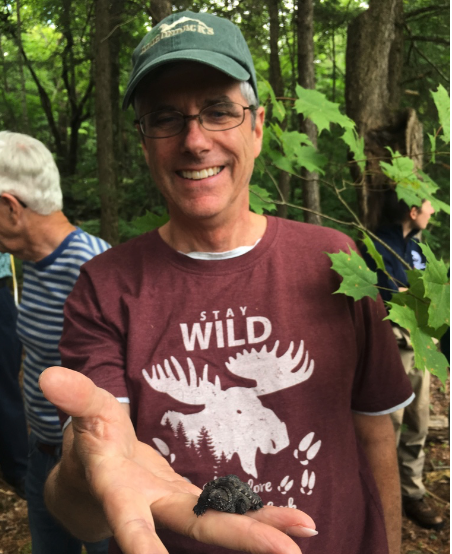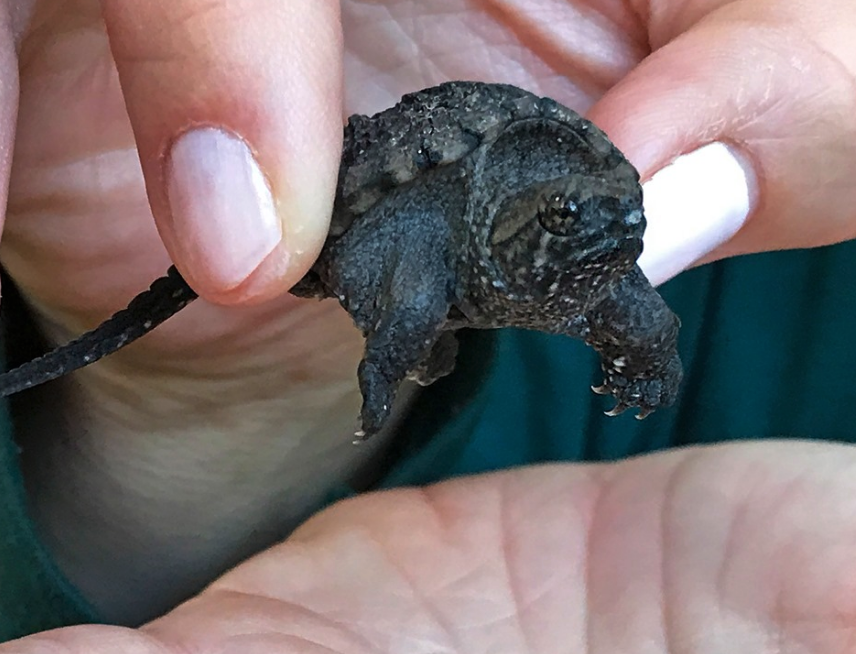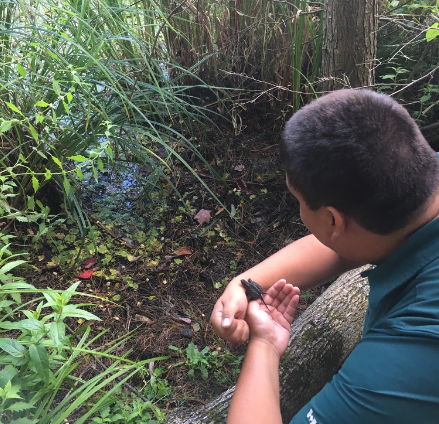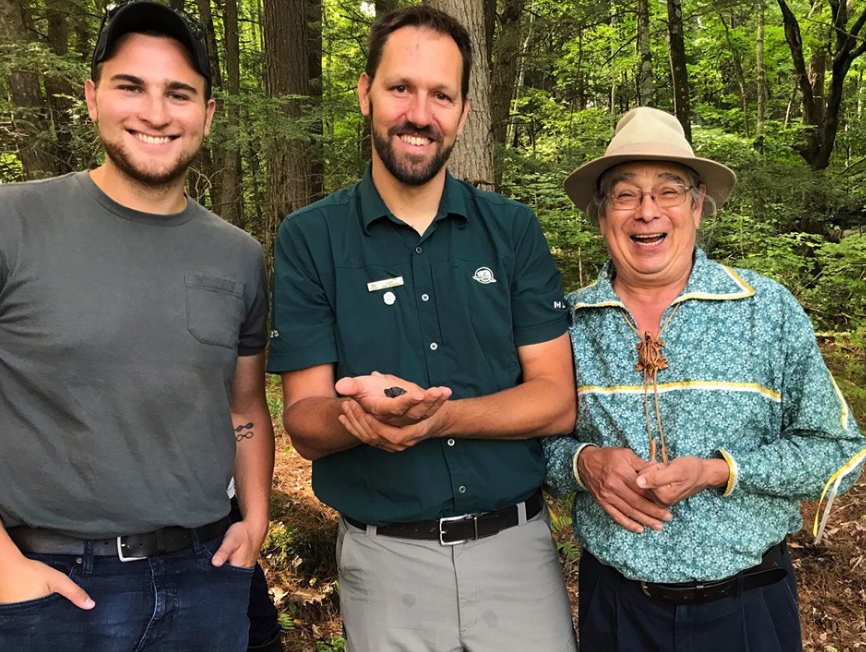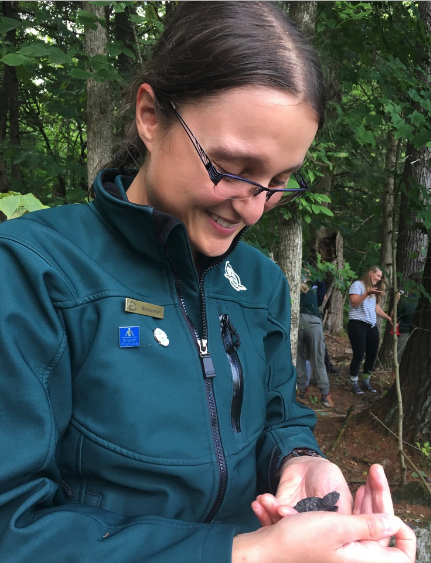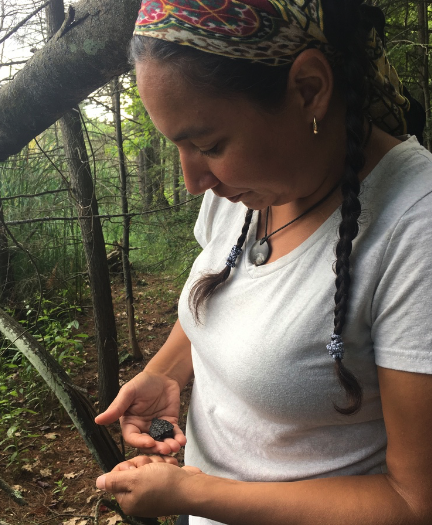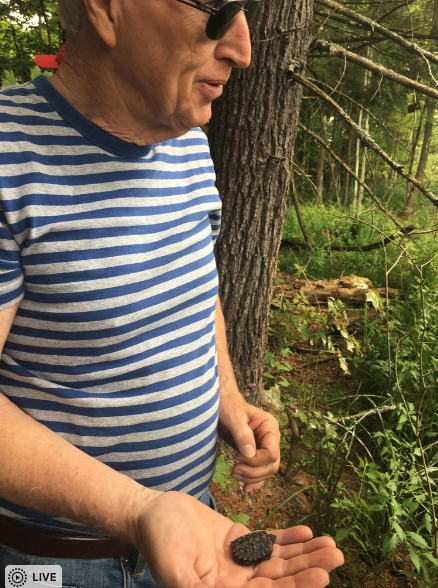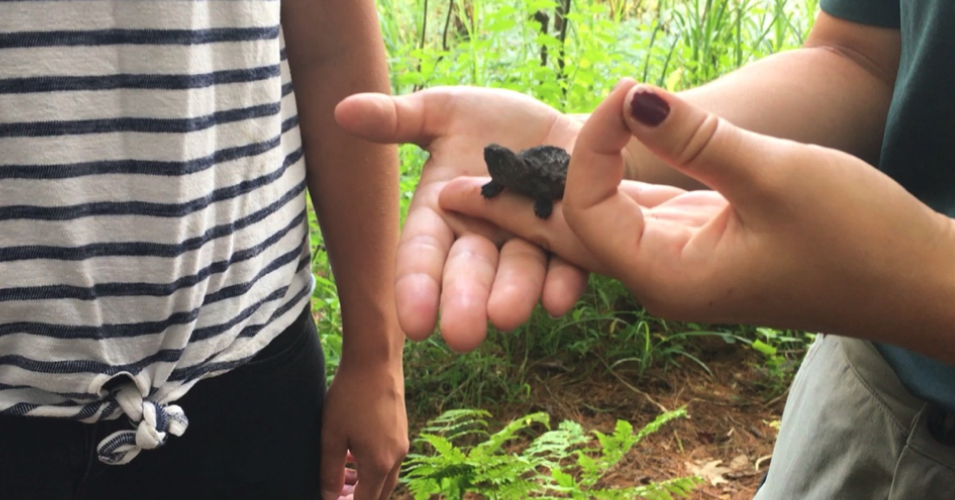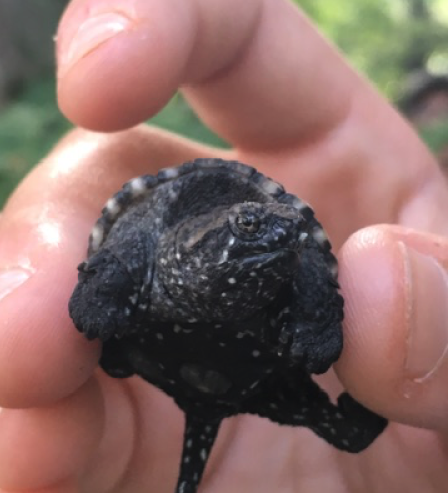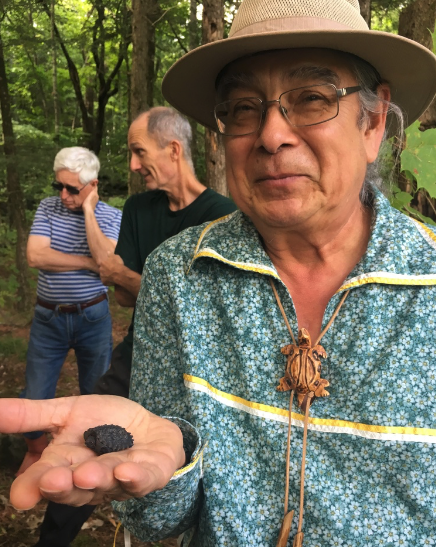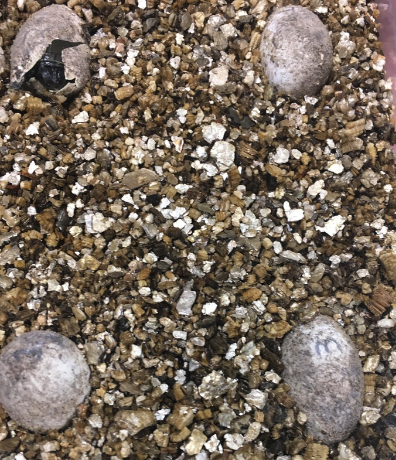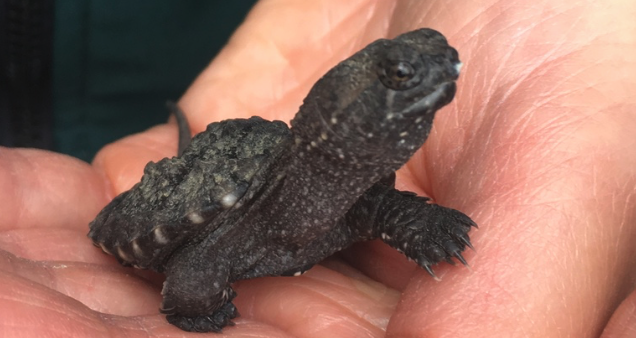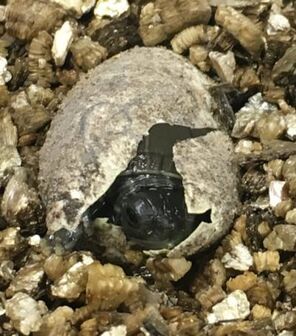 An exhausting procedure, it can take a turtle up to 24 hours to hatch from the shell. An exhausting procedure, it can take a turtle up to 24 hours to hatch from the shell. In an “it takes a village” approach, Thousand Islands National Park invited various NGOs from the area to help with its inaugural turtle hatchling release. While a group of turtles still in the eggs is called a clutch, once hatched, the group of turtles is called a “bale”. About a dozen individuals from the Park and local NGOs joined forces to release the Park’s first “bale” into the wild, near to where the turtle eggs had been originally buried. Not only was this an inaugural release of the year, it was the park’s Reptile and Amphibian Recovery and Education (RARE) program’s first turtle release in general. A decade in the making, Park staff and other conservationists had grown concerned when they noticed turtles had been burying their eggs in a road’s gravel shoulder near a small wetland. This became further alarming when they failed to witness any baby turtles survive. After finally setting up cameras, they discovered the cause: all the nests had been disturbed by predators. Given that all 8 of Ontario’s turtles are at risk, these dedicated conservationists were determined to ensure the survival of as many turtles as they could protect. As the nests were technically outside the park by 20 metres, the first step was to apply for permits from the Government of Ontario. After those were secured, a team was assembled to dig up the eggs. Next the eggs were brought to the Park’s office where the eggs incubated at a temperature of 28.5C. Any lower and the eggs would have predominantly hatched male, and any higher and they would have been mostly female; so they set incubation temperatures at 28.5C, hoping to generate an even mix in sexes. Approximately 200 turtle eggs were collected with most of these appearing to be viable. While most belonged to Snapping Turtles, 7 eggs were found to belong to Painted Turtles. On Friday, August 23, with 32 turtles only a few days old, the Park was ready to release them. With their egg tooth still somewhat visible, the tiny turtles were celebrated and blessed by First Nations partners. Honni David, the Park’s Indigenous Projects Officer gave the thanksgiving address. Haudenosaunee Elder, Henry Lickers of the Turtle Clan provided the final tobacco blessing, sealing the contract between those who attended the ceremony and the turtles: this bound participants to a lifelong promise to protect those turtles. It was an emotional day for all who attended as the baby turtles were brought to the small wetland’s edge and allowed to find their own way into the water. While some seemed eager, racing to the murky water, others hung back, taking time to adjust to their new surroundings – it was, after all, their first time being outside, with new lights, sounds, and smells to take in. Parks Canada continued to release the remainder of the turtles as they hatched and invited different groups, including local school children. As Park’s staff noted, it is important to foster stewardship in future generations. A2A Executive Director, David Miller commented on how special these events are as they bring different like-minded communities together, reaffirming hope and our commitment to work together to protect wildlife and their habitat. It’s a veritable conservation “potluch” - with some organizations bringing the rescue and rehab, A2A brings the conservation and connectivity. That’s why the work A2A does to preserve the ecology that we have is important, as is enhancing the region’s viability. Currently, A2A is working on publishing a Conservation Action Plan for the A2A region which will provide real recommendations and steps that municipalities, landowners, and other community members can take in order to preserve and enhance wildlife habitat and connectivity. It may take a village to release a turtle, but it takes an entire bio-region’s concerted effort to ensure that turtle can move freely, feed, mate, and produce surviving babies. The same goes for every animal that calls the A2A region its home.
0 Comments
Leave a Reply. |
Details
Archives
May 2020
|
© 2024 Algonquin to Adirondacks Collaborative
A2A is a 149(1)(f) registered Canadian charity | BN: 86307 1668 RR0001 | and a 501(c)(3) tax-exempt organization in the U.S. | IRS #86-1358996 |
Become a Member | Maps & Region | FAQs | Donate Online | Contact Us
A2A is a 149(1)(f) registered Canadian charity | BN: 86307 1668 RR0001 | and a 501(c)(3) tax-exempt organization in the U.S. | IRS #86-1358996 |
Become a Member | Maps & Region | FAQs | Donate Online | Contact Us

